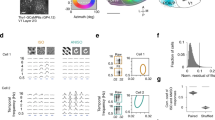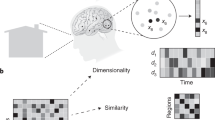Abstract
Neural field models have been successfully applied to model diverse brain mechanisms like visual attention, motor control, and memory. Most theoretical and modeling works have focused on the study of the dynamics of such systems under variations in neural connectivity, mainly symmetric connectivity among neurons. However, less attention has been given to the emerging properties of neuron populations when neural connectivity is asymmetric, although asymmetric activity propagation has been observed in cortical tissue. Here we explore the dynamics of neural fields with asymmetric connectivity and show, in the case of front propagation, that it can bias the population to follow a certain trajectory with higher activation. We find that asymmetry relates linearly to the input speed when the input is spatially localized, and this relation holds for different kernels and input shapes. To illustrate the behavior of asymmetric connectivity, we present an application: standard video sequences of human motion were encoded using the asymmetric neural field and compared to computer vision techniques. Overall, our results indicate that asymmetric neural fields are a competitive approach for spatiotemporal encoding with two main advantages: online classification and distributed operation.













Similar content being viewed by others
Notes
\(\gamma \)-Aminobutyric acid is one of the main inhibitory neurotransmitters in the mammalian central nervous system.
References
Amari S (1977) Dynamics of pattern formation in lateral-inhibition type neural fields. Biol Cybern 27(2):77–87
Beim Graben P, Potthast R (2009) Inverse problems in dynamic cognitive modeling. Chaos Interdiscip J Nonlinear Sci 19(1):015103
Bressloff PC (2012) Spatiotemporal dynamics of continuum neural fields. J Phys A 45(3):033001
Bressloff PC, Folias S, Prat A, Li Y (2003) Oscillatory waves in inhomogeneous neural media. Phys Rev Lett 91:178101
Briggman KL, Helmstaedter M, Denk W (2011) Wiring specificity in the direction-selectivity circuit of the retina. Nature 471(7337): 183–188
Carandini M, Ferster D (2000) Membrane potential and firing rate in cat primary visual cortex. J Neurosci 20(1):470–484
Cerda M, Girau B (2011) Spatiotemporal pattern coding using neural fields: optimal parameter estimation. Research Report RR-7543, INRIA, URL http://hal.inria.fr/inria-00566166/en/
Coombes S (2005) Waves, bumps, and patterns in neural field theories. Biol Cybern 93:91–108
Coombes S, Laing CR (2011) Pulsating fronts in periodically modulated neural field models. Phys Rev E 83(1):011912
Dollar P, Rabaud V, Cottrell G, Belongie S (2005) Behavior recognition via sparse spatio-temporal features. In: 2nd Joint IEEE International Workshop on visual surveillance and performance evaluation of tracking and surveillance, pp 65–72
Erlhagen W, Bicho E (2006) The dynamic neural field approach to cognitive robotics. J Neural Eng 3(3):R36
Ermentrout G, McLeod J (1993) Existence and uniqueness of travelling waves for neural network. Proc R Soc Edinb 123A:461–478
Ermentrout G, Jalics J, Rubin J (2010) Stimulus-driven traveling solutions in continuum neuronal models with a general smooth firing rate function. SIAM J Appl Math 70(8):3039–3064
Escobar MJ, Kornprobst P (2012) Action recognition via bio-inspired features: the richness of center-surround interaction. Comput Vis Image Underst 116(5):593–605
Faubel C, Schöner G (2008) Learning to recognize objects on the fly: a neurally based dynamic field approach. Neural Netw 21(4):562–576
Fix J, Rougier N, Alexandre F (2010) A dynamic neural field approach to the covert and overt deployment of spatial attention. Cogn Comput 3(1):279–293
Folias SE, Bressloff PC (2005) Stimulus-locked traveling waves and breathers in an excitatory neural network. SIAM J Appl Math 65(6):2067–2092
Gong P, Van Leeuwen C (2009) Distributed dynamical computation in neural circuits with propagating coherent activity patterns. PLoS Comput Biol 5(12):e1000611
Hansel D, Sompolinsky H (1998) Modeling feature selectivity in local cortical circuits. In: Methods in neuronal modeling: from synapses to networks. MIT Press, Cambridge
Horta C, Erlhagen W (2006) Robust persistent activity in neural fields with asymmetric connectivity. Neurocomputing 69(10G12):1141–1145.
Jhuang HJ (2011) Dorsal stream: from algorithm to neuroscience. PhD thesis, EECS, Boston, USA
Jirsa VK (2004) Connectivity and dynamics of neural information processing. Neuroinformatics 2(2):183–204
Jirsa VK, Kelso JAS (2000) Spatiotemporal pattern formation in neural systems with heterogeneous connection topologies. Phys Rev E 62:8462–8465
Kilpatrick Z, Ermentrout B (2012) Hallucinogen persisting perception disorder in neuronal networks with adaptation. J Comput Neurosci 32:25–53
Kilpatrick ZP, Folias SE, Bressloff PC (2008) Traveling pulses and wave propagation failure in inhomogeneous neural media. SIAM J Appl Dyn Syst 7(1):161–185
Mathworks (2007) Image processing toolbox for use with Matlab: User Guide. The Mathworks Inc., Natick
Matikainen P, Hebert M, Sukthankar R (2009) Trajectons: action recognition through the motion analysis of tracked features. Workshop on Video-Oriented Object and Event Classification, ICCV 2009
Messing R, Pal CJ, Kautz HA (2009) Activity recognition using the velocity histories of tracked keypoints. In: EEE 12th international conference on computer vision. ICCV 2009, pp 104–111
Misra J, Saha I (2010) Artificial neural networks in hardware: a survey of two decades of progress. Neurocomputing 74(1–3):239–255
Moeslund T, Hilton A, Krüger V (2006) A survey of advances in vision-based human motion capture and analysis. Comput Vis Image Underst 104:90–126
Pinto DJ, Troy W, Kneezel T (2009) Asymmetric activity waves in synaptic cortical systems. SIAM J Appl Dyn Syst 8:1218–1233
Potthast R, Graben P (2009) Inverse problems in neural field theory. SIAM J Appl Dyn Syst 8(4):1405–1433
Potthast R, Beim Graben P (2010) Existence and properties of solutions for neural field equations. Math Methods Appl Sci 33(8):935–949
Rougier N (2006) Dynamic neural field with local inhibition. Biol Cybern 94(3):169–179
Rougier N, Vitay J (2006) Emergence of attention within a neural population. Neural Netw 19(5):573–581
Schuldt C, Laptev I, Caputo B (2004) Recognizing human actions: a local svm approach. In: International conference on pattern recognition (ICPR), vol 3, pp 32–36
Sun J, Wu X, Yan S, Cheong LF, Chua TS, Li J (2009) Hierarchical spatio-temporal context modeling for action recognition. In: CVPR, IEEE, pp 2004–2011
Taylor JG (1999) Neural “bubble” dynamics in two dimensions: foundations. Biol Cybern 80(6):393–409
Troy WC (2008) Traveling waves and synchrony in an excitable large-scale neuronal network with asymmetric connections. SIAM J Appl Dyn Syst 7:1247–1282
Wang H, Kläser A, Schmid C, Liu CL (2011) Action recognition by dense trajectories. In: The 24th IEEE conference on computer vision and pattern recognition. CVPR 2011:3169–3176
Wilson HR, Cowan JD (1972) Excitatory and inhibitory interactions in localized populations of model neurons. Biophys J 12(1):1–24
Wu J, Xiaoying H, Chuan Z (2008) Propagating waves of activity in the neocortex: what they are, what they do. Neuroscientist 14(5): 487–502
Xie X, Giese MA (2002) Nonlinear dynamics of direction-selective recurrent neural media. Phys Rev E 65:1–11
Acknowledgments
M.C. is funded by the Millennium Scientific Initiative (ICM P09-015-F). The authors want to acknowledge the anonymous reviewers for their valuable comments and help improving the quality of the manuscript.
Author information
Authors and Affiliations
Corresponding author
Appendices
Appendix 1: Numerical simulations
The numerical simulation of Eqs. 3 and 16 was performed with a discrete version of Eq. 3,
where we directly apply the 4th order Runge-Kutta method. To discretize the integral we use a trapezoidal rule. Here we use the parameters: \({\text{ d}}t=0.1, {\text{ d}}\theta =2 \pi /60, \tau =.15, J_0=-9.8, J_1=13.5, C=5, T=4.9\); and the total activity was computed over 1000 iterations. Numerically, the system is robust to simulate and we were able to obtain similar results using the Euler method.
In the case of 2D case the parameters were: \(J_0=-.2, J_1=100, \sigma =21, {\text{ d}}r=1, {\text{ d}}\theta =2 \pi /\sigma \); and the total activity was computed over 100 iterations. Smaller kernel size and fewer iterations than in 1D were chosen to handle the dimension of input images (\(160\times 120\) pixels). 1D and 2D implementations were performed in Matlab (Mathworks 2007) and parameters were selected by trial and error, except when indicated otherwise (\(\sigma , {\text{ d}}r\)).
Appendix 2: Neural field non-linearity
We translate the non-linearity outside the integral to simplify the analysis. Calling the input \(I(x,t)=E(x,t) + h\) and writing it as \(I(x,t)=\tau \frac{\partial \tilde{I}(x,t)}{\partial t} + \tilde{I}(x,t),\) we can rewrite Eq. 1 as,
Using the change of variable \(u(x,t) - \tilde{I}(x,t) = \int _{\Omega } w(|x^{\prime }- x|) m(x^{\prime },t){\text{ d}}x^{\prime },\) and as w can be in general any function, we can express Eq. 19 as,
Appendix 3: Input-asymmetry derivation
We take \(\partial / \partial v \) of at both sides of Eq. 13 using \(D=J^2_1 f^2_1 \cos (\Delta )^2 - 2 J_1 f_1 \cos (\Delta )\cos (\Delta +\beta )+1\) to obtain,
As we minimize \(\theta _c,\) we set \(\partial \theta _c/ \partial v|_{v=v_m}=0\) in Eq. 20 and develop the term \(\partial D / \partial v|_{v=v_m}=0\)
A second order polynomia is obtained for \(v_m\) from Eq. 21 recalling that \(\Delta =\arctan (\tau v),\)
Rights and permissions
About this article
Cite this article
Cerda, M., Girau, B. Asymmetry in neural fields: a spatiotemporal encoding mechanism. Biol Cybern 107, 161–178 (2013). https://doi.org/10.1007/s00422-012-0544-0
Received:
Accepted:
Published:
Issue Date:
DOI: https://doi.org/10.1007/s00422-012-0544-0




